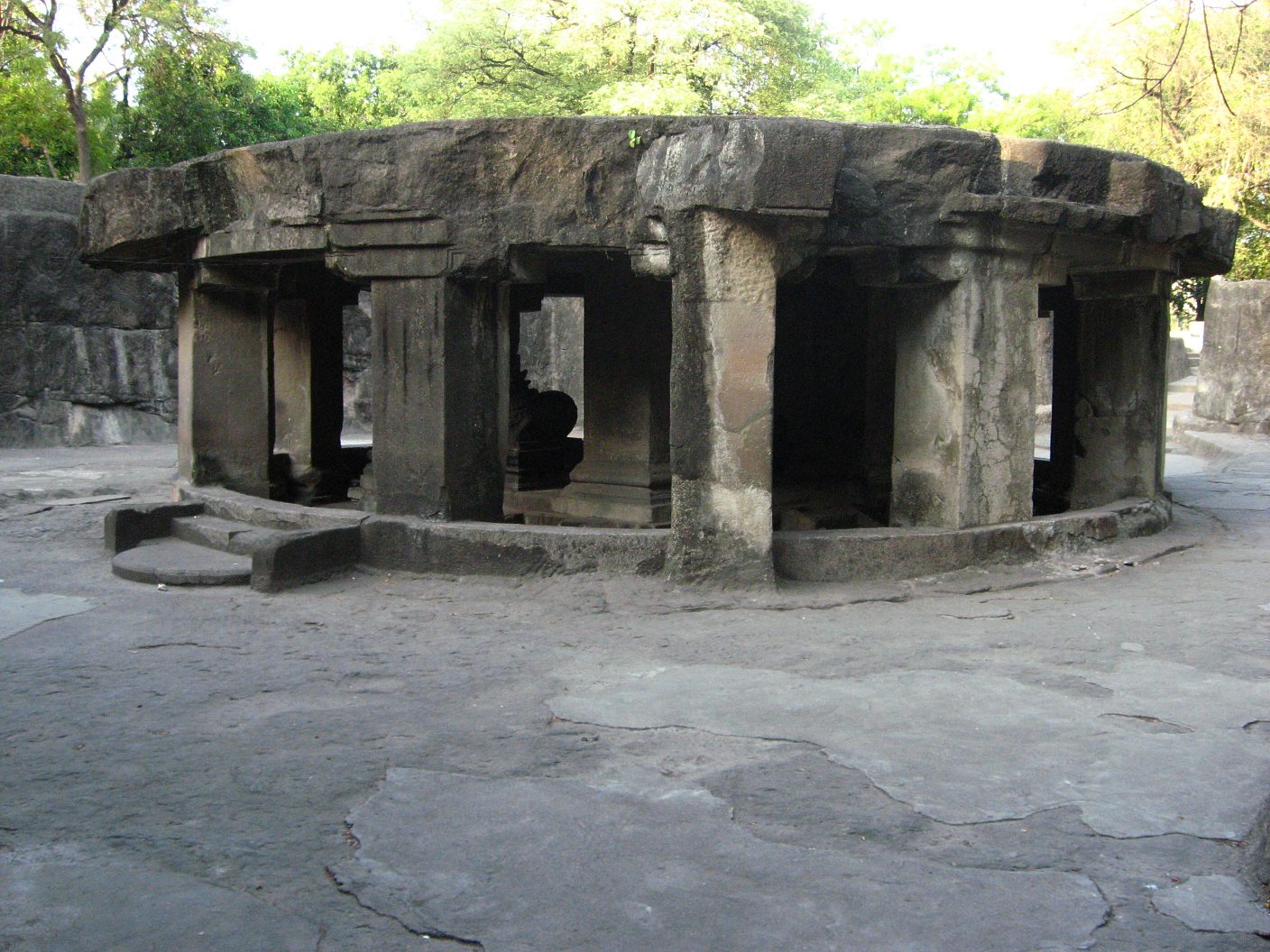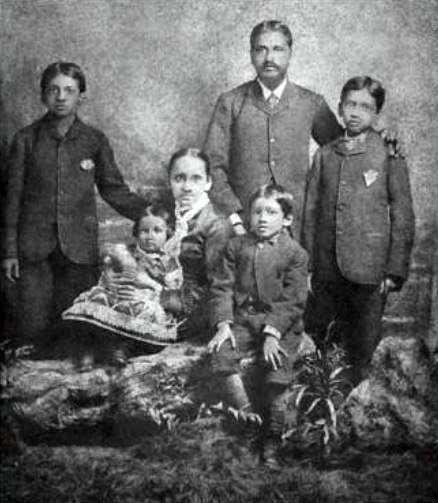|
Jnana Prabodhini
Jnana Prabodhini is a social organization in India. Founded in 1962, its activities have expanded into multiple aspects of social work. The main activity of the organization is to provide education. It aims at refining the physical, mental, intellectual, and spiritual qualities of people in general and of the youth in particular, believing that this development will encourage positive social leadership qualities. Its activities are centered in the fields of education, research, rural development, health, and youth organisation. The organization is headquartered in Pune, Maharashtra, formed around a cluster of public charitable trusts. It is active in most districts of Maharashtra, with facilities in Pune, Nigdi, Salumbre, Solapur, Harali, and Ambajogai. It does some work in parts of Jammu and Kashmir and the northeastern states of India. The organization has started a school in Nigdi, Solapur and Sadashiv Peth, Pune. Foundation and activities Jnana Prabodhini was founde ... [...More Info...] [...Related Items...] OR: [Wikipedia] [Google] [Baidu] |
Pune
Pune ( ; , ISO 15919, ISO: ), previously spelled in English as Poona (List of renamed Indian cities and states#Maharashtra, the official name until 1978), is a city in the state of Maharashtra in the Deccan Plateau, Deccan plateau in Western India. It is the administrative headquarters of the Pune district, and of Pune division. In terms of the total amount of land under its jurisdiction, Pune is the largest city in Maharashtra, with a geographical area of 516.18 sq km, though List of cities in India by population, by population it comes in a distant second to Mumbai. According to the 2011 Census of India, Pune has 7.2 million residents in the metropolitan region, making it the List of metropolitan areas in India, seventh-most populous metropolitan area in India. The city of Pune is part of Pune Metropolitan Region. Pune is one of the largest IT hubs in India. It is also one of the most important Automotive industry in India, automobile and Manufacturing in India, manufacturin ... [...More Info...] [...Related Items...] OR: [Wikipedia] [Google] [Baidu] |
Kashmir
Kashmir ( or ) is the Northwestern Indian subcontinent, northernmost geographical region of the Indian subcontinent. Until the mid-19th century, the term ''Kashmir'' denoted only the Kashmir Valley between the Great Himalayas and the Pir Panjal Range. The term has since also come to encompass a larger area that includes the Indian-administered territories of Jammu and Kashmir (union territory), Jammu and Kashmir and Ladakh, the Pakistani-administered territories of Azad Kashmir and Gilgit-Baltistan, and the Chinese-administered territories of Aksai Chin and the Trans-Karakoram Tract. Quote: "Kashmir, region of the northwestern Indian subcontinent. It is bounded by the Uygur Autonomous Region of Xinjiang to the northeast and the Tibet Autonomous Region to the east (both parts of China), by the Indian states of Himachal Pradesh and Punjab to the south, by Pakistan to the west, and by Afghanistan to the northwest. The northern and western portions are administered by Pakistan a ... [...More Info...] [...Related Items...] OR: [Wikipedia] [Google] [Baidu] |
Manoj Mukund Naravane
General (India), General Manoj Mukund Naravane (born 22 April 1960) is a retired Indian Army General who served as the Chief of the Army Staff (India), 28th Chief of the Army Staff (COAS), as well as the temporary Chairman of the Chiefs of Staff Committee from 15 December 2021 until his superannuation on 30 April 2022. He took over as COAS from General (India), General Bipin Rawat on 31 December 2019. Prior to his appointment as the COAS, the general officer served as the Vice Chief of the Army Staff (India), 40th Vice Chief of Army Staff of the Indian Army, General officer commanding#Usage in the Indian Army, General Officer Commanding-in-Chief (GOC-in-C) of Eastern Command (India), Eastern Command and General officer commanding#Usage in the Indian Army, General Officer Commanding-in-Chief of Army Training Command. He also served as II Corps (India), General Officer Commanding II Corps and also as General officer commanding, General Officer Commanding Delhi Area. After retireme ... [...More Info...] [...Related Items...] OR: [Wikipedia] [Google] [Baidu] |
ÅrÄddha
ÅrÄddha (Sanskrit: शà¥à¤°à¤¾à¤¦à¥à¤§), is a ritual that some Hindus perform to pay homage to their pitá¹s (dead ancestors). They believe that the ritual would provide peace to the ancestors in their afterlife. It is performed on the death anniversaries of the departed as per the Hindu Calendar. In addition it is also performed for the entire community of 'pitr' â both from paternal and maternal side â collectively during the Pitri Paksha or ''Shraaddha'' paksha ('fortnight of ancestors'), right before '' Sharad Navaratri'' in autumn. Rituals In practice, the karta (person who performs the ÅrÄddha): (1) Invites Brahmanas (priests) that day, invokes in them the divinity of his/her parent, worships and feeds them. (2) Performs a homa (fire ritual), appeasing Agni and Soma â the deities who transmit the offerings to the ancestors, nourish and protect them. (3) Offers pinda (type of rice balls) to the departed souls ("pinda dana", offered to the Pitá¹s, the ances ... [...More Info...] [...Related Items...] OR: [Wikipedia] [Google] [Baidu] |
Puja (Hinduism)
() is a worship ritual performed by Hindus to offer devotional homage and prayer to one or more deities, to host and honour a guest, or to spiritually celebrate an event. It may honour or celebrate the presence of special guests, or their memories after they die. The word ''puja'' is roughly translated into English as 'reverence, honour, homage, adoration, or worship'.पà¥à¤à¤¾ ''Sanskrit Dictionary'', Germany (2009) ''Puja'' (পà§à¦à§ / পà§à¦à¦¾ in Bengali language, Bangla), the loving offering of light, flowers, and water or food to the divine, is the essential ritual of Hinduism. For the worshipper, the divine is visible in the image, and the divinity sees the worshipper. The interaction between human and deity, between human and guru, is called a ''Darshan (Indian re ... [...More Info...] [...Related Items...] OR: [Wikipedia] [Google] [Baidu] |
NÄmakaraá¹a
Namakarana () is the naming ceremony in Hinduism and a samskara (rite of passage) to name a baby.Pandey, R.B. (1962, reprint 2003). ''The Hindu Sacraments (Saá¹skÄra)'' in S. Radhakrishnan (ed.) ''The Cultural Heritage of India'', Vol.II, Kolkata:The Ramakrishna Mission Institute of Culture, , p.392 Description According to the Grhya Sutras, ''Namakarana'' ceremony is typically performed on the tenth or the twelfth day after birth. Some texts suggest the naming ceremony be done on the first new moon or full moon day after the 10th day of birth. Alternate opinions range from the tenth day to the first day of the second year.Pandey, Rajbali (1969, reprint 2006) ''Hindu Saá¹skÄras: Socio-Religious Study of the Hindu Sacraments'', Delhi:Motilal Banarsidass, , pp.78-89 On the day of this samskara, the infant is bathed and dressed in new garments. Their formal name, selected by the parents, is announced. The naming ritual solemnizes the child as an individual, marking the proces ... [...More Info...] [...Related Items...] OR: [Wikipedia] [Google] [Baidu] |
Residential School At Jnana Prabodhini, Harali
A residential area is a land used in which housing predominates, as opposed to industrial and commercial areas. Housing may vary significantly between, and through, residential areas. These include single-family housing, multi-family residential, or mobile homes. Zoning for residential use may permit some services or work opportunities or may totally exclude business and industry. It may permit high density land use or only permit low density uses. Residential zoning usually includes a smaller FAR (floor area ratio) than business, commercial or industrial/manufacturing zoning. The area may be large or small. Overview In certain residential areas, especially rural, large tracts of land may have no services whatever, such that residents seeking services must use a motor vehicle or other transportation, so the need for transportation has resulted in land development following existing or planned transport infrastructure such as rail and road. Development patterns may be regul ... [...More Info...] [...Related Items...] OR: [Wikipedia] [Google] [Baidu] |
Marathi Language
Marathi (; , ð¦ð¨ð°ðð², , ) is a Classical languages of India, classical Indo-Aryan languages, Indo-Aryan language predominantly spoken by Marathi people in the Indian state of Maharashtra and is also spoken in Goa, and parts of Gujarat, Karnataka and the territory of Dadra and Nagar Haveli and Daman and Diu. It is the official language of Maharashtra, and an additional official language in the state of Goa, where it is used for replies, when requests are received in Marathi. It is one of the 22 scheduled languages of India, with 83 million speakers as of 2011. Marathi ranks 13th in the List of languages by number of native speakers, list of languages with most native speakers in the world. Marathi has the List of languages by number of native speakers in India, third largest number of native ... [...More Info...] [...Related Items...] OR: [Wikipedia] [Google] [Baidu] |
Pimpri-Chinchwad
Pimpri-Chinchwad, also known as PCMC, is a city in the Indian state of Maharashtra. The city is about northwest of the historic city of Pune, at an altitude of above sea level. It is the fifth largest city in Maharashtra and the List of most populous cities in India, eighteenth largest city in India and the List of satellite cities by population, sixteenth largest satellite city in the world by population. The city is located southeast from the state's capital Mumbai. It is one of the most rapidly developing suburban areas in India and has emerged as the third fastest growing city in the country. It is well known for its Automotive industry, automotive, Information technology, IT and manufacturing industry. History The first reference to Pune region is found in two copper plates dated to 758 and 768 AD, issued by Rashtrakuta ruler Krishna I. The plates are called "Puny Vishaya" and "Punaka Vishaya" respectively. The plates mention areas around Pune such as Theur, Uruli Kan ... [...More Info...] [...Related Items...] OR: [Wikipedia] [Google] [Baidu] |
Heinemann (publisher)
William Heinemann Ltd., with the imprint Heinemann, was a London-based publisher founded in 1890 by William Heinemann. Their first published book, 1890's ''The Bondman'', was a huge success in the United Kingdom and launched the company. He was joined in 1893 by Sydney Pawling. Heinemann died in 1920 and Pawling sold the company to Doubleday, having worked with them in the past to publish their works in the United States. Pawling died in 1922 and new management took over. Doubleday sold his interest in 1933. Through the 1920s, the company was well known for publishing works by famous authors that had previously been published as serials. Among these were works by H. G. Wells, Rudyard Kipling, W. Somerset Maugham, George Moore, Max Beerbohm and Henry James, among others. This attracted new authors to publish their first editions with the company, including Graham Greene, Edward Upward, J. B. Priestley and Vita Sackville-West. Throughout, the company was also known for i ... [...More Info...] [...Related Items...] OR: [Wikipedia] [Google] [Baidu] |
Sri Aurobindo
Sri Aurobindo (born Aurobindo Ghose; 15 August 1872 â 5 December 1950) was an Indian Modern yoga gurus, yogi, maharishi, and Indian nationalist. He also edited the newspaper Bande Mataram (publication), ''Bande Mataram''. Aurobindo studied for the Imperial Civil Service, Indian Civil Service at King's College, Cambridge, King's College, in Cambridge, England. After returning to India, he took up various civil service works under the Maharaja of the princely state of Baroda State, Baroda. He became increasingly involved in nationalist politics in the Indian National Congress and the nascent revolutionary movement in Bengal with the Anushilan Samiti. He was arrested in the aftermath of a number of bombings linked to his organization in a public trial where he faced charges of treason for Emperor v. Aurobindo Ghosh and others, Alipore Conspiracy and then released, after which he moved to Pondicherry (city), Pondicherry and developed a spiritual practice he called Integral ... [...More Info...] [...Related Items...] OR: [Wikipedia] [Google] [Baidu] |
Dayananda Saraswati
Dayanand Saraswati () born Mool Shankar Tiwari (12 February 1824 â 30 October 1883), was a Hindu philosopher, social leader and founder of the Arya Samaj, a reform movement of Hinduism. His book '' Satyarth Prakash'' has remained one of the influential texts on the philosophy of the Vedas and clarifications of various ideas and duties of human beings. He was the first to give the call for '' Swaraj'' as "India for Indians" in 1876, a call later taken up by Lokmanya Tilak.Aurobindo Ghosh, ''Bankim Tilak Dayanand'' (Calcutta 1947, p. 1) "Lokmanya Tilak also said that Swami Dayanand was the first who proclaimed Swaraj for Bharatpita i.e. India." Denouncing the idolatry and ritualistic worship, he worked towards reviving Vedic ideologies. Subsequently, the philosopher and President of India, S. Radhakrishnan, called him one of the "makers of Modern India", as did Sri Aurobindo. Those who were influenced by and followed Dayananda included Chaudhary Charan Singh, Madam Cama, ... [...More Info...] [...Related Items...] OR: [Wikipedia] [Google] [Baidu] |







